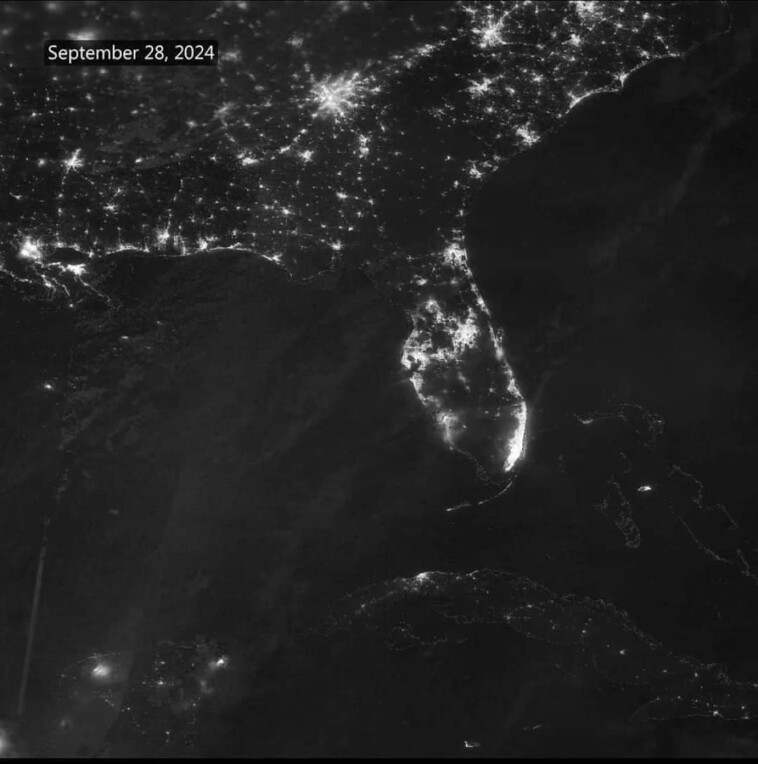Hurricane Helene’s path of devastation is so vast, it can be seen from orbit.
Satellite images taken after the storm show a blacked-out area where residents have lost power spreading across five states.
Around 1.2 million customers are without power in Georgia and the Carolinas as of Wednesday. Thousands more remain in the dark in Florida and Virginia.
The lack of city lights made the American Southeast look like North Korea, as homes and businesses remain without power.
Within that darkness, crews slog through muck and debris to rehang power lines and rebuild fallen cellular towers.
Meanwhile, residents cook food on charcoal and gas stoves, huddle around generators to charge their phones, and hike up mountainsides in search of a signal.
In Augusta, Georgia, Sherry Brown converted power from her car’s alternator to keep her refrigerator running. She has been taking “bird baths” with water collected in coolers. In another part of the city, people waited in line more than three hours to get water from one of five centers set up to serve more than 200,000 people.
Cliff Stewart survived two feet of water that poured into his home. Left without electricity and reliant on food drop-offs from friends, he has refused offers to help him leave.
“Where am I going to go?” the Marine Corps veteran said. “This is all I’ve got. I just don’t want to give it up, because what am I going to do? Be homeless? I’d rather die right here than live homeless.”
For days, more than 20 acute care hospitals in western North Carolina relied on backup generators to keep their patients alive, although they have since been reconnected to the grid, the state health department said.
Meanwhile, downed towers and damaged fiber cables have left communities throughout the region without cell service and internet.
“People are walking the streets of Canton with their phones up in the air trying to catch a cellphone signal like it’s a butterfly,” said Mayor Zeb Smathers of Canton, North Carolina. “Every single aspect of this response has been extremely crippled by lack of cellphone communication. The one time we absolutely needed our cellphones to work, they failed.”
AT&T said it launched “one of the largest mobilizations of our disaster recovery assets,” and Verizon is scrambling to provide alternate forms of connectivity.
But the region’s spread-out populations connected by thin, winding mountain roads have made hanging new wire and erecting new towers a massive challenge, said David Zumwalt, president and CEO of the Association for Broadband Without Boundaries.
The effort to rebuild and reconnect faces another major problem: Many local engineers and technicians were caught in the devastation themselves.
“Many of our workers live and work in these communities as well,” one power company spokesperson told the Charlotte Observer. “Some of them have experienced personal tragedy and challenges too.”
With Post wires







